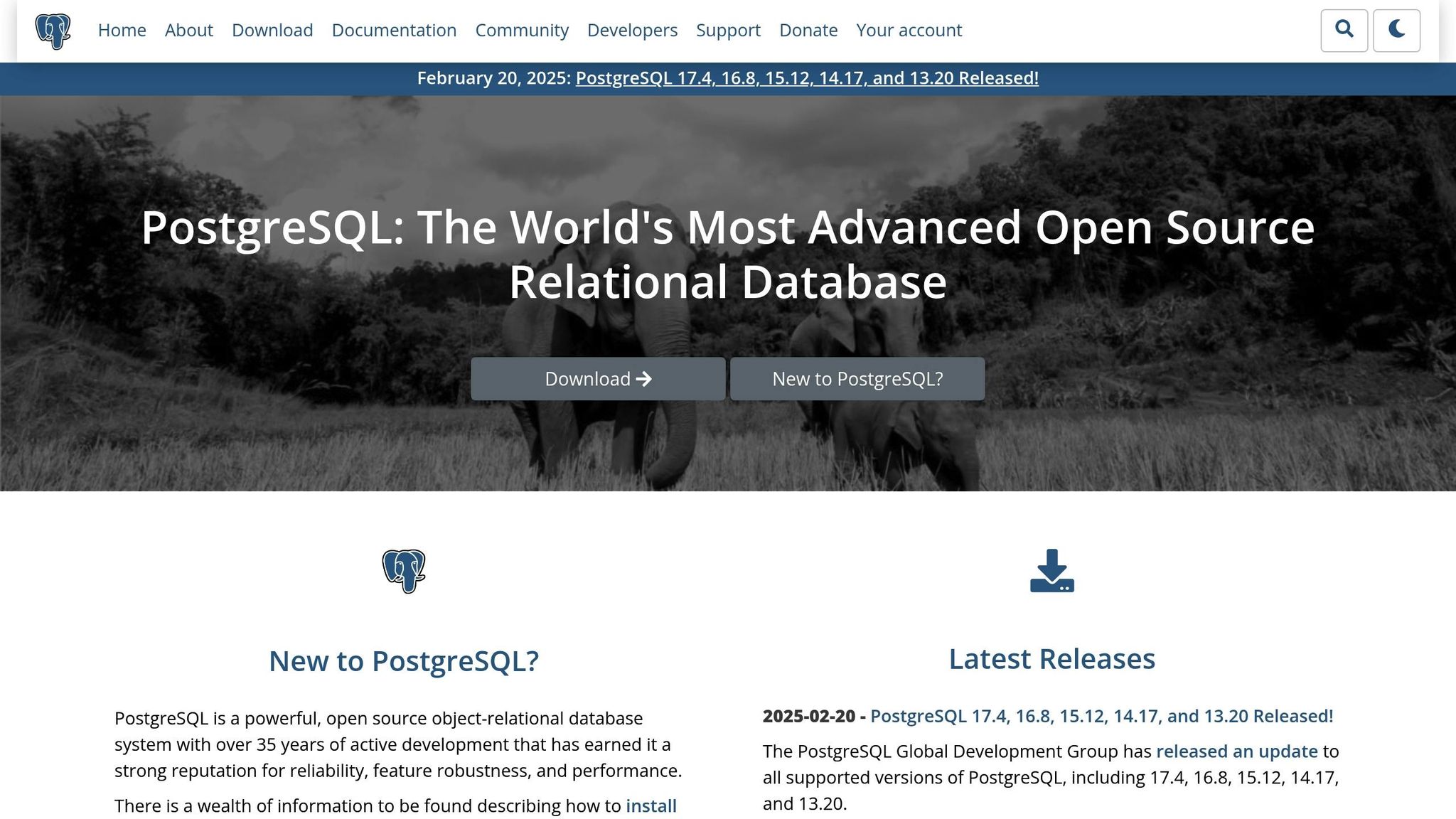Indexing Basics for WordPress Databases

Want your WordPress site to run faster? Database indexing is the key. It organizes your data to make queries quicker, meaning faster page loads and a smoother experience for your visitors.
Key Takeaways:
- What is indexing? Think of it like a book index – it helps your database find data faster without scanning everything.
- Why it matters: Proper indexing speeds up searches, improves site performance, and handles growth as your content scales.
- Common WordPress indexes: Tables like
wp_postsandwp_usersuse indexes (e.g.,post_date,user_email) to optimize retrieval. - How to improve: Add indexes to frequently queried columns like
post_authorormeta_key, but don’t overdo it – too many indexes can slow down updates.
Quick Tip:
Use tools like MySQL EXPLAIN or the Query Monitor plugin to analyze slow queries and decide where to add indexes. Regularly review and maintain your indexes for long-term performance.
Bottom line: Indexing makes your WordPress database faster and more efficient. Start by targeting the columns you query most often.
Index Functions in WordPress
How Database Indexes Work
Database indexes act like a roadmap for your data, allowing MySQL to locate rows much faster. By creating a sorted reference for specific columns, MySQL can use binary search methods instead of scanning every single row. For instance, if you add an index to the post_date column, MySQL can quickly filter posts within a specific date range. Below, we’ll explore the types of indexes that help optimize WordPress database performance.
WordPress Index Types
WordPress uses three main types of indexes:
| Index Type | Purpose | Common Usage |
|---|---|---|
| PRIMARY | Ensures each row has a unique identifier | post_id, user_id |
| UNIQUE | Prevents duplicate values in a column | user_email, post_name |
| INDEX | Speeds up search queries | post_type, comment_count |
Each type plays a specific role. The PRIMARY index ensures every row has a unique key, UNIQUE indexes stop duplicate values from being stored, and the general INDEX type boosts search efficiency for frequently queried columns.
Index Usage Examples
- Author Searches: Adding an index to the
post_authorcolumn helps fetch posts by a specific author much faster. - Category Filtering: Indexing the
term_taxonomy_idcolumn allows quick filtering of posts by category. - Date-Based Archives: Indexes on the
post_datecolumn make it easier to retrieve posts within a specific time frame.
While proper indexing can significantly improve query speed, over-indexing can slow down write operations, so it’s important to strike a balance.
Main WordPress Table Indexes
Core Tables and Indexes
WordPress tables rely on indexing to improve performance. For example, the wp_posts table includes a primary key on ID for quick post retrieval, along with indexes on post_type and post_status to make filtering faster. In the wp_users table, indexes on user_login and user_email help speed up authentication processes. The wp_comments table uses indexes on comment_post_ID and comment_approved to streamline comment handling.
Other tables, like wp_terms, have a primary index on term_id and a unique index on slug to ensure data consistency. The wp_postmeta table indexes meta_key, making it easier to locate custom metadata. These built-in indexes not only improve query speed but also support better performance as your site grows.
Default Index Benefits
These default indexes reduce the need for full table scans, making operations like loading posts, retrieving comments, managing metadata, and filtering terms much faster. This is especially helpful for websites with a large amount of content, as it ensures quicker query execution and smoother overall performance.
Index Management Guidelines
Selecting Index Columns
When choosing columns to index, focus on those frequently used in WHERE, JOIN, and ORDER BY clauses. For WordPress databases, consider these examples:
- Post-related queries: Index columns like
post_date,post_author, andpost_typeif you often filter or sort using these fields. - User interactions: Index
user_registeredanduser_statusif your site has high user activity. - Custom fields: Index
meta_keyvalues that are commonly searched or filtered.
Use the MySQL slow query log to identify slow-running queries. By analyzing these patterns, you can target specific areas for optimization, ensuring faster query performance.
Index Quantity Limits
Adding too many indexes can increase storage needs, slow down INSERT and UPDATE operations, and create maintenance challenges.
Focus on indexing only the most critical columns based on actual query usage. Avoid creating indexes unnecessarily. Regularly review and remove indexes that don’t improve performance. Keep an eye on the size of your indexes compared to your tables to maintain efficiency and prevent performance issues.
Index Maintenance Tools
Using the right tools is essential for keeping your indexes in good condition. Here are some helpful options:
| Tool Name | Primary Function | Best Use Case |
|---|---|---|
| MySQL EXPLAIN | Query analysis | Checking how indexes are used in queries |
| Query Monitor | WordPress plugin | Tracking query performance in real time |
| phpMyAdmin | Index management | Creating, modifying, or removing indexes |
To maintain your indexes effectively: monitor for fragmentation, rebuild indexes when necessary, analyze query patterns to address gaps, and use performance metrics to verify their impact.
sbb-itb-d55364e
Advanced WordPress Indexing
Custom Content Indexing
To improve query performance, focus on indexing custom fields and taxonomy relationships that are frequently accessed. Key areas to prioritize include:
- Meta fields used for filtering or sorting
- Taxonomy relationship tables
- Custom status fields
- Date-based query columns
For queries combining multiple custom fields, composite indexes can make a big difference. For instance, adding a composite index on both category and price columns can significantly speed up query execution.
Index Updates for Growth
As your site grows, updating your indexing strategy is crucial to maintaining performance. Keep an eye on these growth indicators and take action accordingly:
| Growth Indicator | Action Required | Impact on Performance |
|---|---|---|
| Query execution time increases | Review and optimize existing indexes | Immediate improvement |
| Database size doubles | Analyze index coverage | Medium-term benefit |
| New custom post types | Create targeted indexes | Long-term optimization |
Professional Index Analysis
If standard updates no longer address performance issues, it may be time for expert database optimization. Delays in query responses, complex custom post types, and poor performance during high traffic are all signs that you need professional help.
"At Osom WP Host, we understand your frustrations – slow websites, unreliable support, high costs, and endless options. Our expert team personally matches your business with hosting that actually fits your needs, budget, and goals."
Here’s an example: An e-commerce store was paying $300 per month for hosting that couldn’t handle peak sales. Osom WP Host matched them with a provider offering hosting for $150 per month. This resulted in 50% savings, faster site speeds, and excellent support.
During a professional analysis, the focus areas typically include:
- Evaluating query patterns
- Reviewing index usage statistics
- Optimizing storage
- Monitoring performance
- Planning for future scalability
Database Indexing Explained (with PostgreSQL)

Summary
This section highlights how indexing plays a key role in optimizing WordPress database performance.
Benefits of Indexing
Indexing your database can improve WordPress performance by:
- Speeding up queries with more efficient data retrieval
- Lowering server resource usage
- Making your site more responsive
- Handling growth as your content expands
With these advantages in mind, here are some steps to take your database performance to the next level.
Steps to Improve Performance
Follow these steps to optimize your database:
-
Assess Current Performance
Check your query logs to identify slow or problematic queries. -
Add Targeted Indexes
Focus on adding indexes to frequently queried columns, custom relationship fields, and date fields. -
Regular Maintenance
Review and remove unused indexes, and keep monitoring query performance over time.
If you encounter ongoing challenges, consider reaching out to Osom WP Host for expert help tailored to your WordPress hosting and database optimization needs.
FAQs
How do I identify which columns in my WordPress database should be indexed for better performance?
To determine which columns in your WordPress database need indexing, focus on columns frequently used in queries like those in WHERE, JOIN, ORDER BY, or GROUP BY clauses. Indexing these columns can significantly improve database performance by reducing query execution times.
Start by analyzing your site’s query patterns using tools like query logs or performance monitoring plugins. Look for columns that are repeatedly queried or filtered, especially in large tables like wp_posts or wp_postmeta. However, keep in mind that while indexes boost read performance, they can slightly slow down write operations, so index only where necessary.
If you’re unsure or need expert advice, consulting with a WordPress hosting specialist, like Osom WP Host, can help you optimize your database and overall site performance based on your specific needs.
What are the risks of adding too many indexes to my WordPress database, and how can I manage them effectively?
Adding too many indexes to your WordPress database can negatively impact performance, especially during write operations like inserts, updates, and deletes. Each index must be updated when data changes, which can slow down these processes. Additionally, indexes take up extra storage space, which can lead to increased disk usage.
To manage this effectively, focus on indexing only the columns that are frequently used in searches or queries. Regularly review your database to identify and remove any unnecessary or redundant indexes. This ensures your database remains optimized without compromising performance.
What are some effective ways to monitor and maintain the performance of my WordPress database indexes?
Regularly monitoring and maintaining your WordPress database indexes is essential for ensuring optimal performance. While there are no specific tools mentioned in the provided content, you can use general database management tools like phpMyAdmin or command-line utilities to inspect and optimize your database. These tools allow you to analyze query performance, identify slow queries, and reorganize indexes for better efficiency.
Additionally, keeping your WordPress installation updated and periodically cleaning up unnecessary data (like old revisions, spam comments, or unused plugins) can help maintain database health. For tailored guidance on hosting and database performance, consider consulting WordPress experts who can provide insights specific to your needs.
